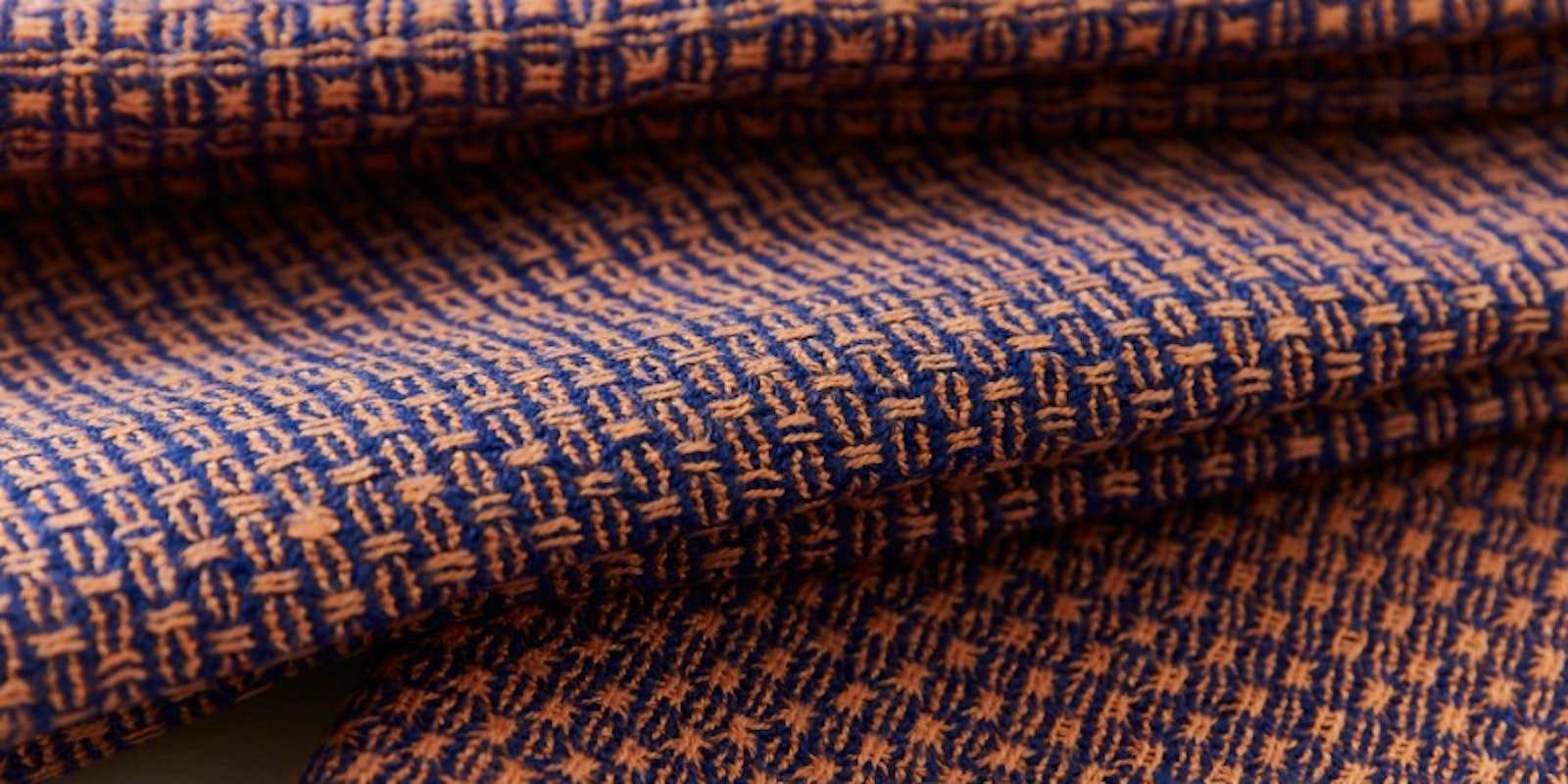"What if?" is a powerful phrase. Two little words can lead to a whole world of discovery and inspiration. Before the creation of every great piece of art, the artist asked, “What if?” What if I use dots instead of brush strokes when painting a picture? What if I write a musical about Alexander Hamilton? What if I put pickles on pizza? For his huck towels in Handwoven May/June 2018, Tom asked “What if” as he figured out a way to combine color-and-weave and huck and fell in love with lace along the way.
Happy weaving! Christina
Tom Knisely’s Huck Towels with Color-and-Weave Effects.
Designer Tom Knisely’s Statement
My interest in weaving typically leans toward weaving rugs of all sorts—in other words, not lace. When it comes to huck lace, however, my experience was similar to being adopted by a stray cat: I didn’t think I needed a cat, and I didn’t go out searching for a cat, but a cat adopted me. Let me explain how I came to weave huck lace with color-and-weave effects.
My exploration began when I came across a piece of fabric woven with the smallest example of log cabin that I had ever seen. The pattern blocks contained only five ends, and each block began and ended with a dark end. It was different from the way I had learned to thread plain-weave log cabin. Thinking about it, I realized that the five-end block would be simple to thread on two shafts, but expanded to a four-shaft straight draw, the five-end block would have to be repeated four times, requiring twenty ends to create a pattern block that started on shaft 1 and ended on shaft 4. I decided that was too long and too complicated.
I put that log cabin threading on the back burner for another day. Not long after, while looking through The Best of Weaver’s: Huck Lace, I glanced at the explanation of how the structure works and had an “aha” moment: I had found the answer to my log cabin dilemma. Huck threading units use an odd number of ends and can have as few as three ends, although the most common is five ends. Eureka! If I threaded my log cabin arrangement dark, light, dark, light, dark over a huck threading and simply treadled it for plain weave, the threading would be easier. Then I had another epiphany: What if I treadle it for huck lace using the same color-and-weave pattern? Within the hour, I was winding and warping and sliding down the path on an unexpected journey that has kept me intrigued for several years now. I keep thinking and asking myself “What if?” and then I go and wind another warp to satisfy my new curiosity. The weaving has been mind-blowing.
These three towels are based on my experiments using color-and-weave effects with weave structures not commonly combined with color-and-weave—in this case, huck lace. Who knew that I would become a lover of all sorts of lace weaves? I hope you try weaving these towels and become as excited as I am about applying color-and-weave effects to less commonly used weave structures.
RESOURCES van der Hoogt, Madelyn, ed. The Best of Weaver’s: Huck Lace. Sioux Falls, South Dakota: XRX, 2000.
Project at a Glance
PROJECT TYPE: 4-shaft.
STRUCTURE: Huck lace and color-and-weave effects.
EQUIPMENT: 4-shaft loom, 19" weaving width; 10-dent reed; 2 shuttles; 2 bobbins.
YARNS: 16/2 unmercerized cotton (2,738 yd/lb; Bockens).


